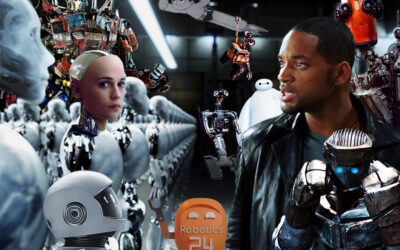Plural ➝ Turing tests
- A test of a machine’s ability to exhibit intelligent behavior equivalent to, or indistinguishable from, that of a human
- The test requires an evaluator to interact with both a human and a machine through a computer interface and then determine which one is the human and which is the machine based solely on their responses.
The Turing test, proposed by British mathematician and computer scientist Alan Turing in 1950, is a benchmark for assessing a machine’s ability to exhibit human-like intelligent behavior. In the Turing test, a human evaluator engages in a conversation with both a human and a machine, without visual cues. If the evaluator cannot reliably distinguish between the human and the machine based solely on the conversation, the machine is said to have passed the test and demonstrated a form of artificial intelligence.
Synonyms
Imitation game – Human-Machine Conversation Test
Antonyms
Machine Discernibility Test – Unintelligent Interaction Assessment
Etymology
The term “Turing test” is named after Alan Turing, a British mathematician, cryptanalyst and computer scientist who proposed the concept in his paper “Computing Machinery and Intelligence” in 1950.
The test was originally called the “imitation game”
Pronunciation
TUR-ing test /ˈtjʊərɪŋ tɛst/
Analogies
The Turing test is like a game of “20 questions” where one player is a machine and the other player is a human, and the evaluator must determine which player is the machine based on their answers.
The Turing test is like a blindfolded judge trying to distinguish between a human and a machine by only listening to their responses in a conversation.
Related terms
Artificial intelligence (AI) – Natural Language Processing (NLP) – Machine learning – Robotics
Derived terms
Turing Machine: a theoretical machine that can simulate any computer algorithm
Reverse Turing test: A test where a machine evaluates whether a human is real or fake (CAPTCHA)
Lovelace Test: A variation of the Turing test where a machine must generate creative output that is indistinguishable from human creativity.
Loebner Prize: An annual competition that awards a prize to the chatbot that comes closest to passing the Turing test.
Quotations and historical references
“We can only see a short distance ahead, but we can see plenty there that needs to be done”
Alan Turing, Computing Machinery and Intelligence, 1950
“The ultimate objective of the Turing test is not merely to determine whether the computer can imitate a human being, but rather whether it can do so well enough to convince a human evaluator that it is, in fact, a human being”
Ray Kurzweil, The Singularity is Near: When Humans Transcend Biology, 2005
Fields of Application
- Artificial Intelligence: Assessing the advancement of AI in terms of human-like communication.
- Chatbots and Virtual Assistants: Developing conversational agents that provide seamless interactions with humans.
- Philosophy of Mind: Fueling discussions on the nature of consciousness, intelligence, and human-machine comparisons.
Example sentences
The machine passed the Turing test, convincing the evaluator that it was a human.
Researchers are using the Turing test to evaluate the effectiveness of their AI algorithms.
The chatbot passed the Turing Test by convincing the human judges that it was also human.
Curiosities
- Some critics argue that the Turing test is too simplistic and does not adequately measure a machine’s true intelligence.
- In 2014, a computer program called “Eugene Goostman” claimed to have passed the Turing Test by convincing 33% of judges that it was human.
- “The Imitation Game” is a 2014 movie about Alan Turing, a mathematician who helped crack the German Enigma code in World War II. It explores his genius, his struggles with his identity, and his pivotal role in history.
Watch the 100+ robot movie
Frequently Asked Questions
Can a machine pass the Turing test without truly understanding language?
Yes, a machine can pass the Turing test by mimicking human responses without understanding the underlying meaning.
Has any AI successfully passed the Turing test?
Yes, there have been claims of AI passing the test, but debates about the stringency of the test conditions persist.
How is the Turing test different from the Reverse Turing test?
In the Turing test, a human evaluator interacts with a machine and a human, while in the Reverse Turing test, a machine evaluates human responses.
What is the significance of the Loebner Prize in relation to the Turing test?
The Loebner Prize is an annual competition that aims to find the most human-like conversational AI, effectively acting as a practical instantiation of the Turing test.



